Best cat food bowl 2025 for the perfect mealtime
We’ve rustled up the best cat food bowls out there, designed to avoid whisker fatigue, prevent digestive issues and reduce mess.
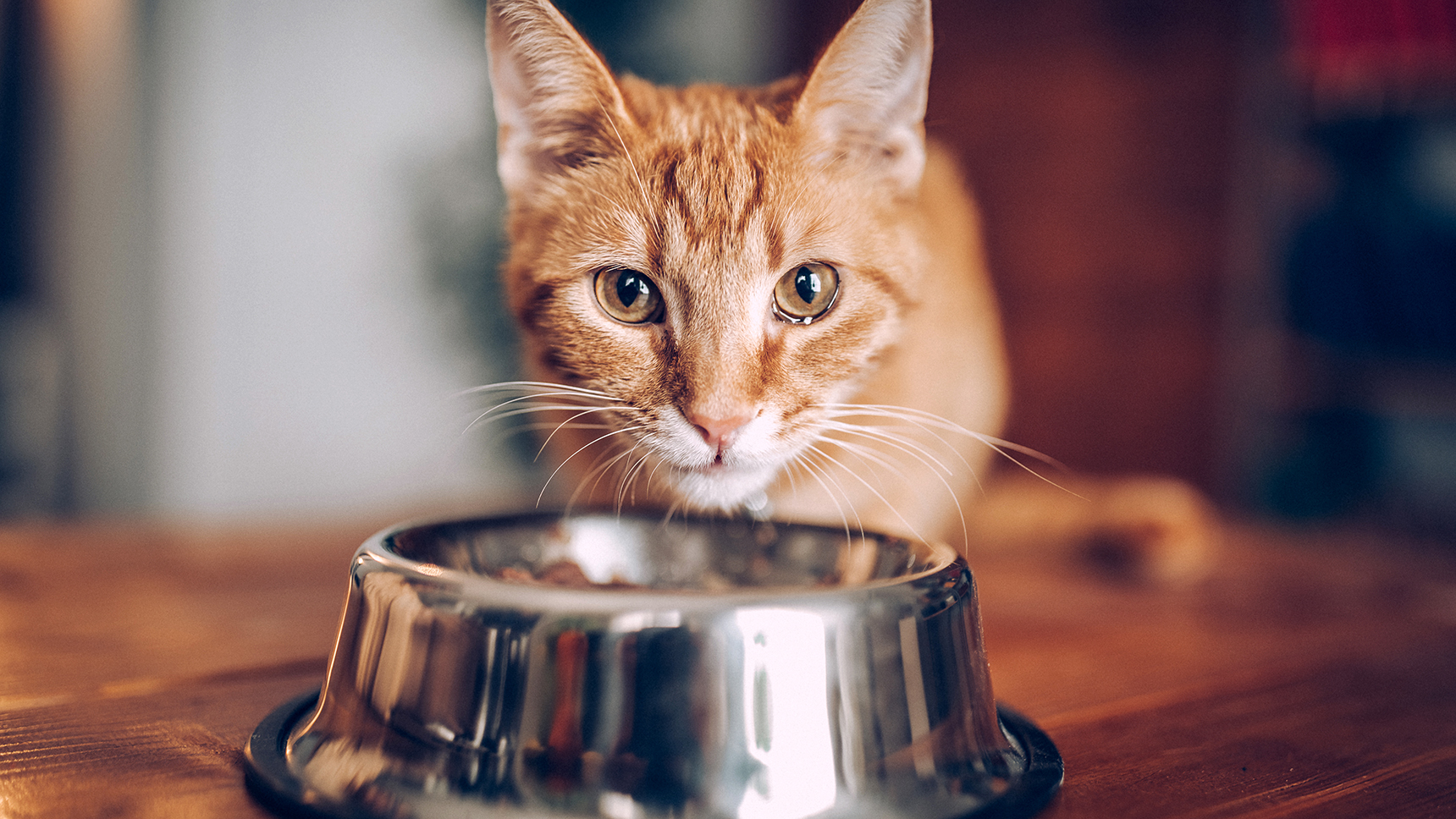
They say the first bite is with the eye, and that’s why you should make sure to serve your feline’s meals in the best cat food bowls.
You might not think your cat would care about that sort of thing, but if you’re going to spend all that money on getting them the best cat foods, then it’d be a shame to serve it up in a dingy bowl.
There are other benefits beyond aesthetics though - many modern cat bowls are designed with your cat’s health in mind, offering a more comfortable eating position to reduce the stress on their neck, while wider bowls help avoid irritating their long whiskers. There are also some high tech options out there too. The best slow feeder cat bowls are great for slowing down your cat’s eating pace, stopping them from making themselves ill. Meanwhile the best automatic cat feeders can serve up meals on schedule, even if you’re not around at mealtime.
We’ve consulted with expert vet Dr Joanna Woodnutt to make this comprehensive list of the best cat food bowls out there, offering a range of different options to suit your kitty’s needs. As the good doctor puts it, “The best cat food bowl will always depend on your cat.”
The best cat food bowls 2025
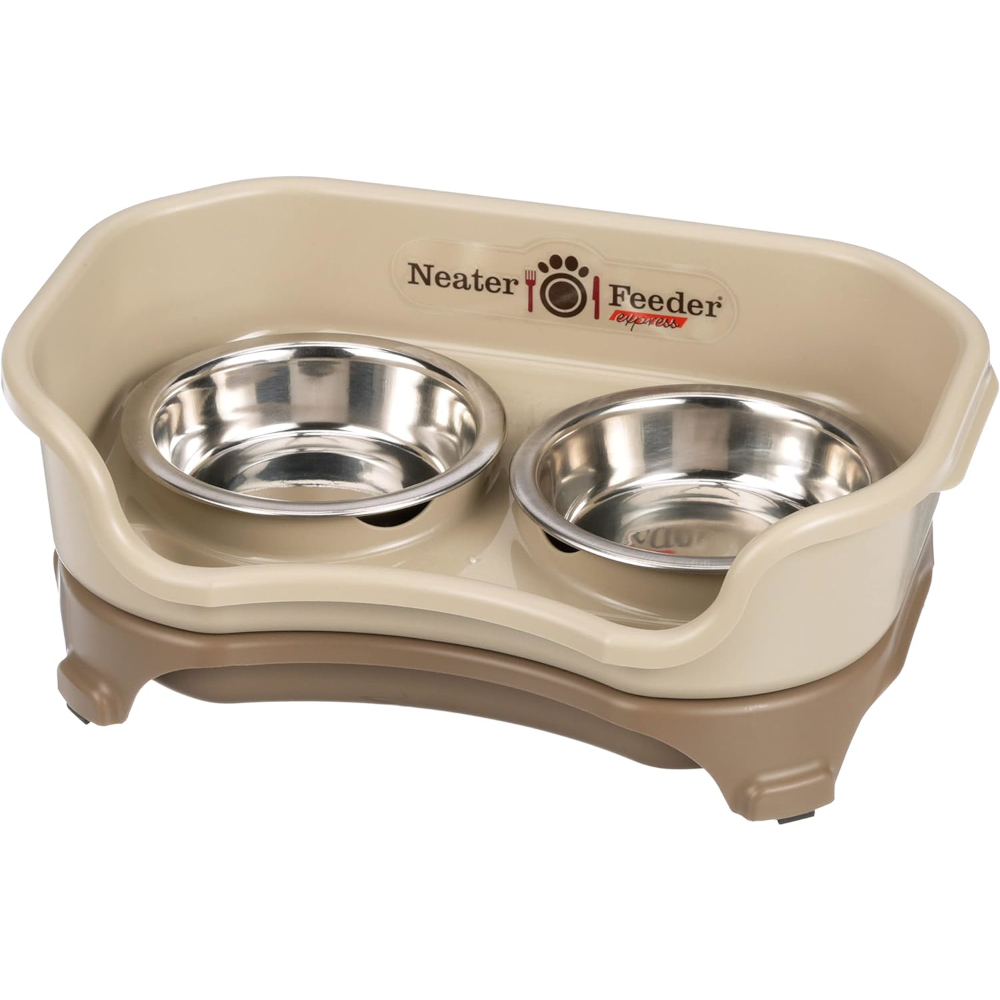
Best overall cat food bowl
This double bowl from Neater is perfect for messy eaters. The plastic walls keep spillages contained making clean-up easier, while also keeping water and food separate.
The elevated position and shallow metal bowls make for a more comfortable eating position for your cat. It's not the cheapest cat bowl out there, but we think it's worth the cost.
Reasons to buy: Elevated, easy to clean, designed to reduce spillage
Reasons to avoid: Small bowls, expensive
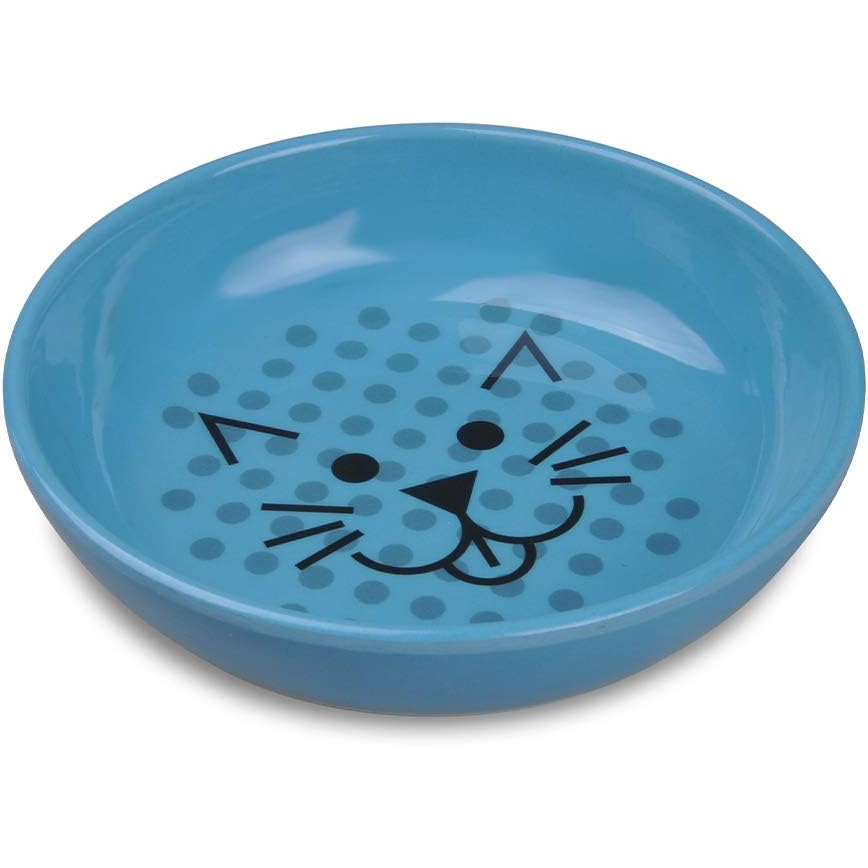
Best budget cat food bowl
This cat bowl is kind on your wallet and the environment thanks to its eco-friendly build. Made from 47% bamboo, it’s also built from chemical, heavy metal, and BPA-free materials.
The shallow and wide design keeps your kitty's whiskers free from stress and damage. We're also quite partial to the adorable design and vibrant color.
Reasons to buy: Eco-friendly, durable, wide and shallow to protect whiskers
Reasons to avoid: Small
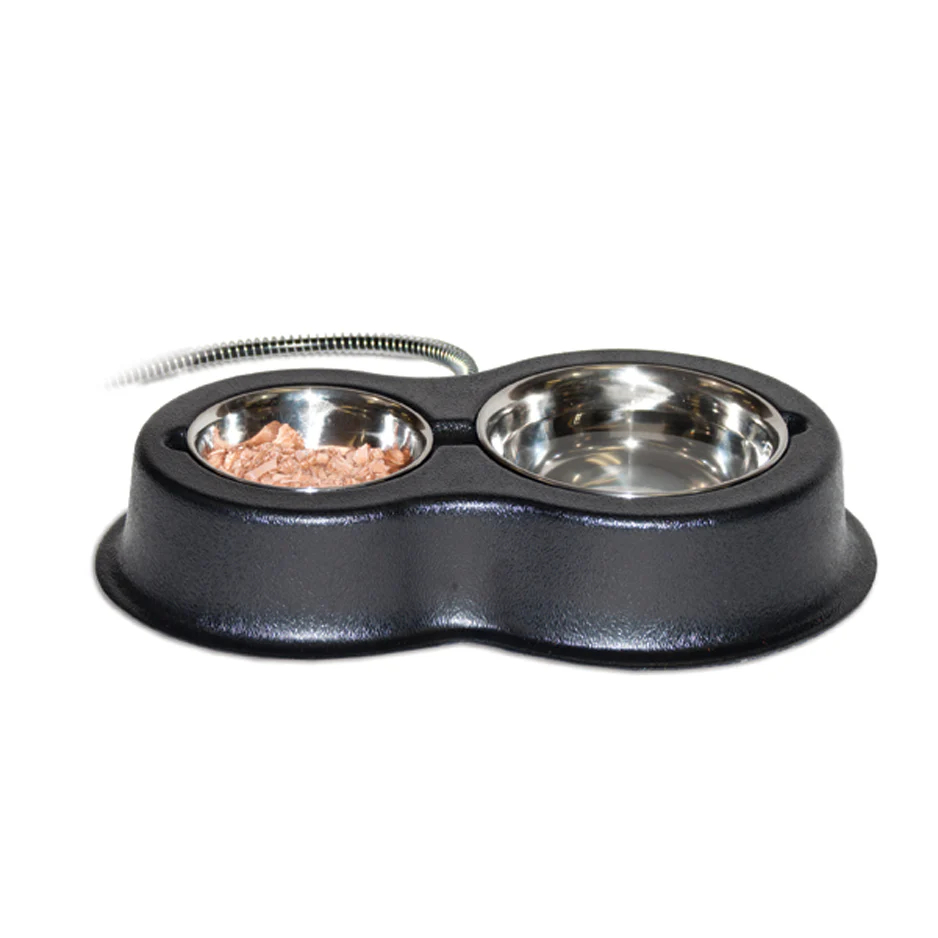
Best for outdoor cats
Outdoor kitties will love this heated bowl, which keeps their wet food and water from freezing over during cold winters. It’s easy to clean and energy efficient, using only 30 watts.
It also turns on and off automatically as required to further keep energy usage down, and if you don't need the heater in the summer months, you can just unplug it.
Reasons to buy: Heated, energy efficient, easy to clean
Reasons to avoid: Can give off plastic smell when heated

Best automatic cat food bowl
Sick of your cat waking you up early in the morning for their breakfast? Busy in the evenings when it’s their dinner time? Then this automatic feeder is perfect for you.
It has scheduling options, and you can even record a voice message to announce feeding times.
Reasons to buy: Scheduling options, voice recorder, dual power options
Reasons to avoid: No lock on hopper
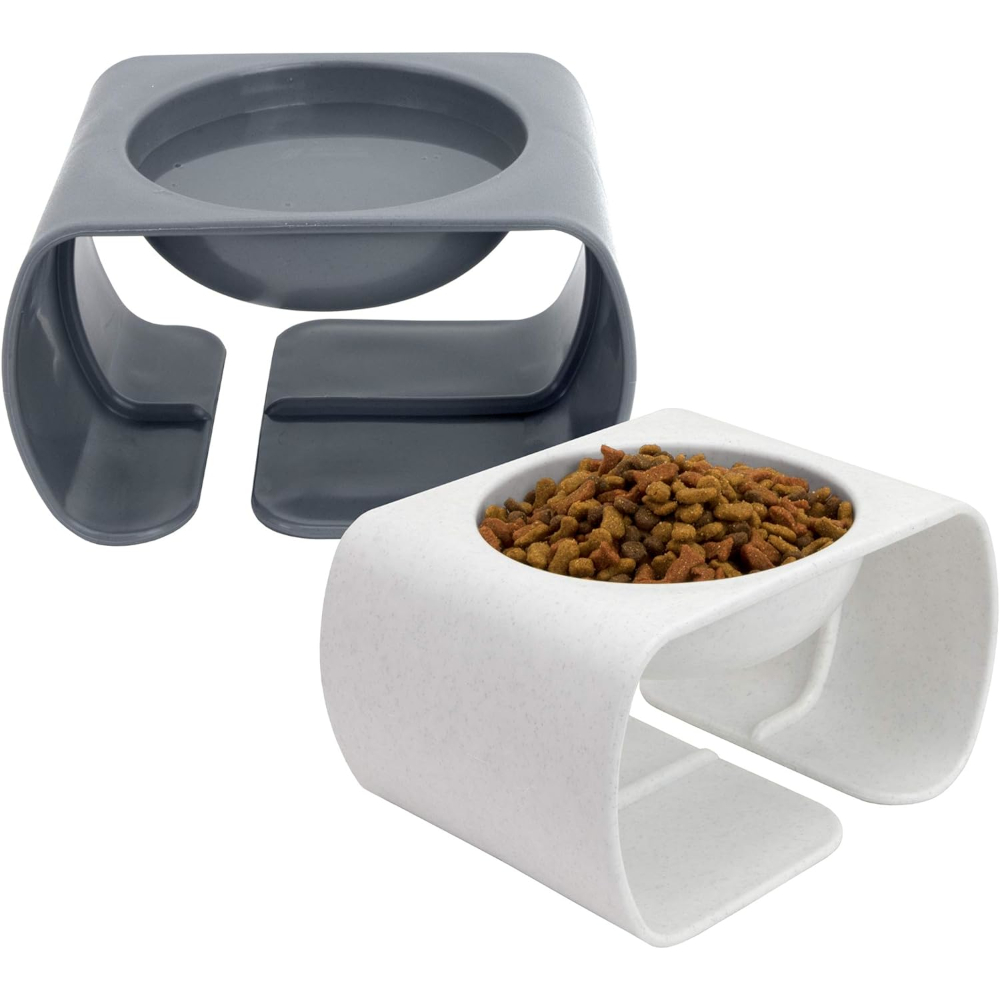
Best elevated cat bowl
This elevated cat bowl stands above the competition, offering your kitty a more comfortable eating position. This relieves stress and pressure from their back and neck, making it ideal for cats with arthritis or sensitive stomachs.
We also love the modern design, and it’s dishwasher safe too.
Reasons to buy: Dishwasher safe, huge capacity, comfortable feeding angle
Reasons to avoid: Deep bowls
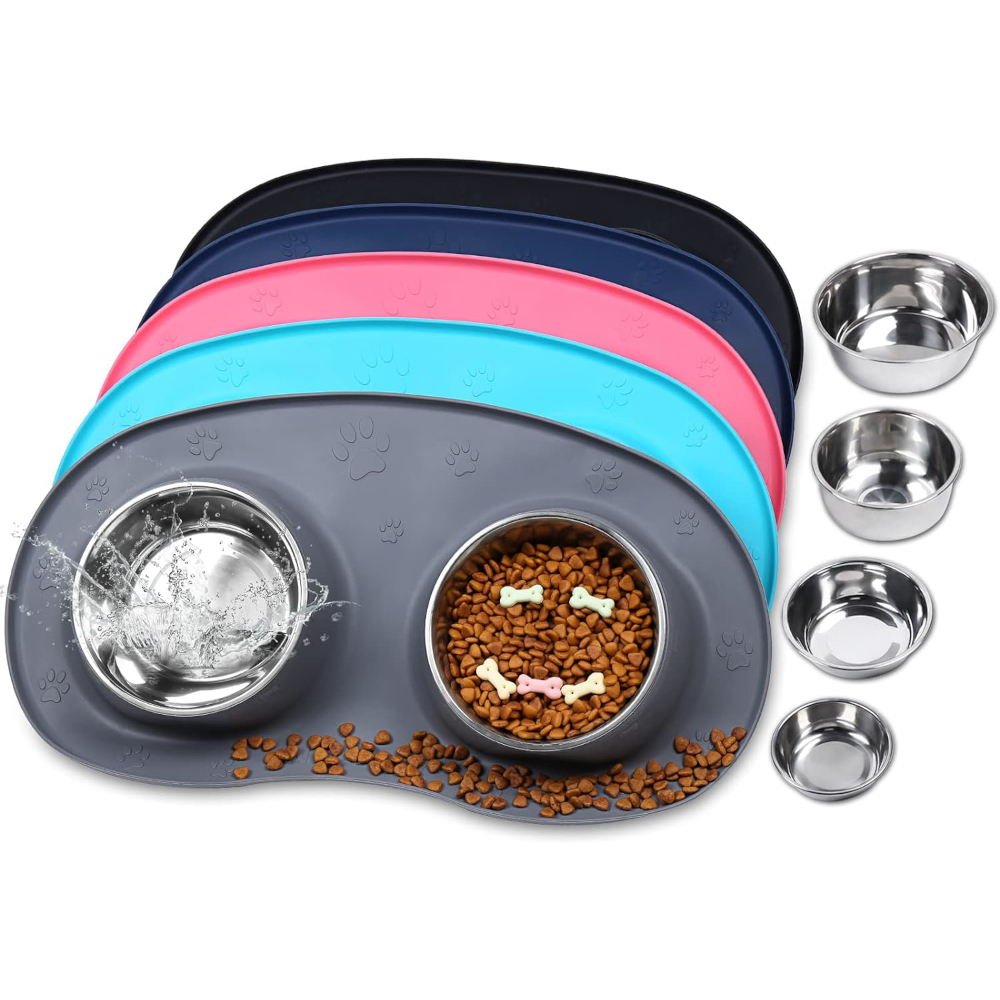
Best non-slip cat bowl
If your feline is always pushing their bowl around the room trying to get every last morsel out of it, this non-slip set of bowls is an ideal solution.
It has stainless steel, removable bowls inset into a silicon mat to catch mess that spills out, and it comes in a variety of sizes.
Reasons to buy: Catches spillage, non-slip, size options
Reasons to avoid: Tough to clean
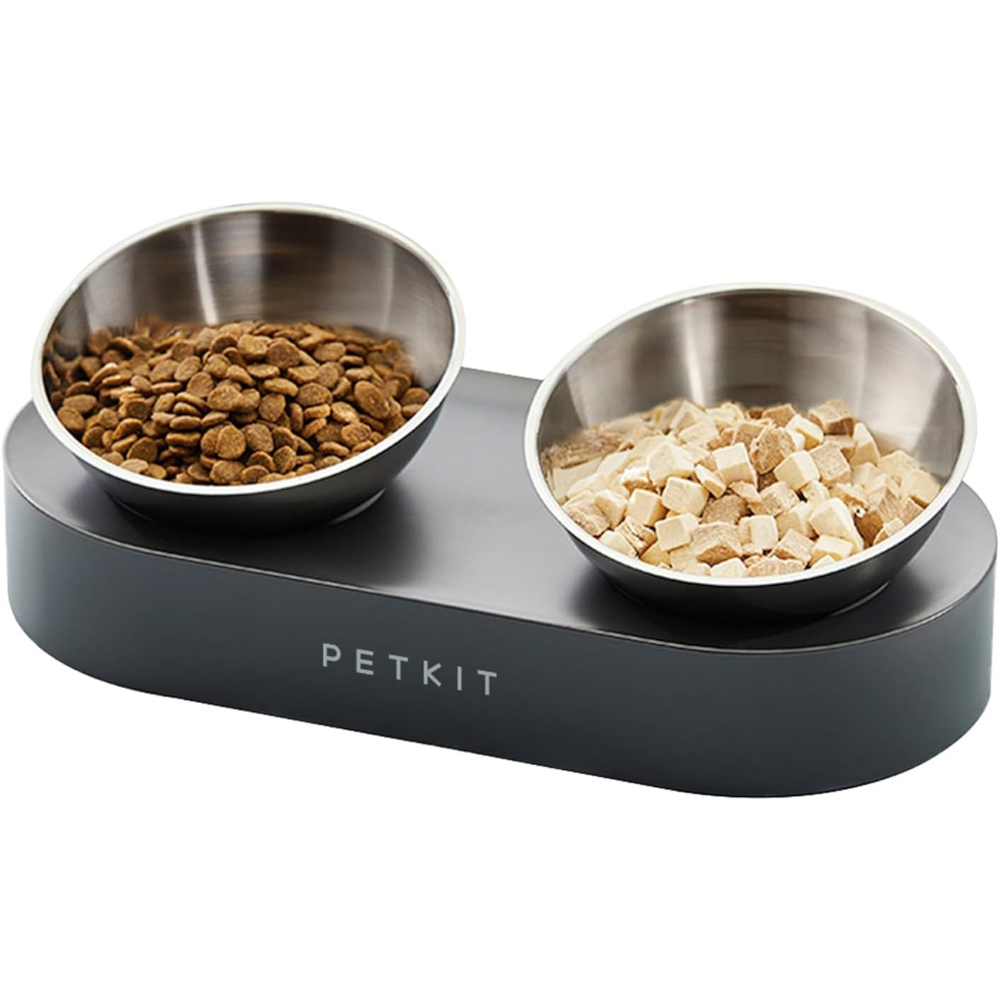
Best stainless steel cat bowl
If your cat is a style icon, this is the food bowl for them. Two sleek stainless steel bowls sit atop an elevated platform that looks like Apple made it.
The bowls are tilted to reduce neck strain during feeding, and can be removed for easy cleaning. It also has grips on the feet to keep it stationary.
Reasons to buy: Tilted for comfortable eating, stylish, easy to clean
Reasons to avoid: Small bowls
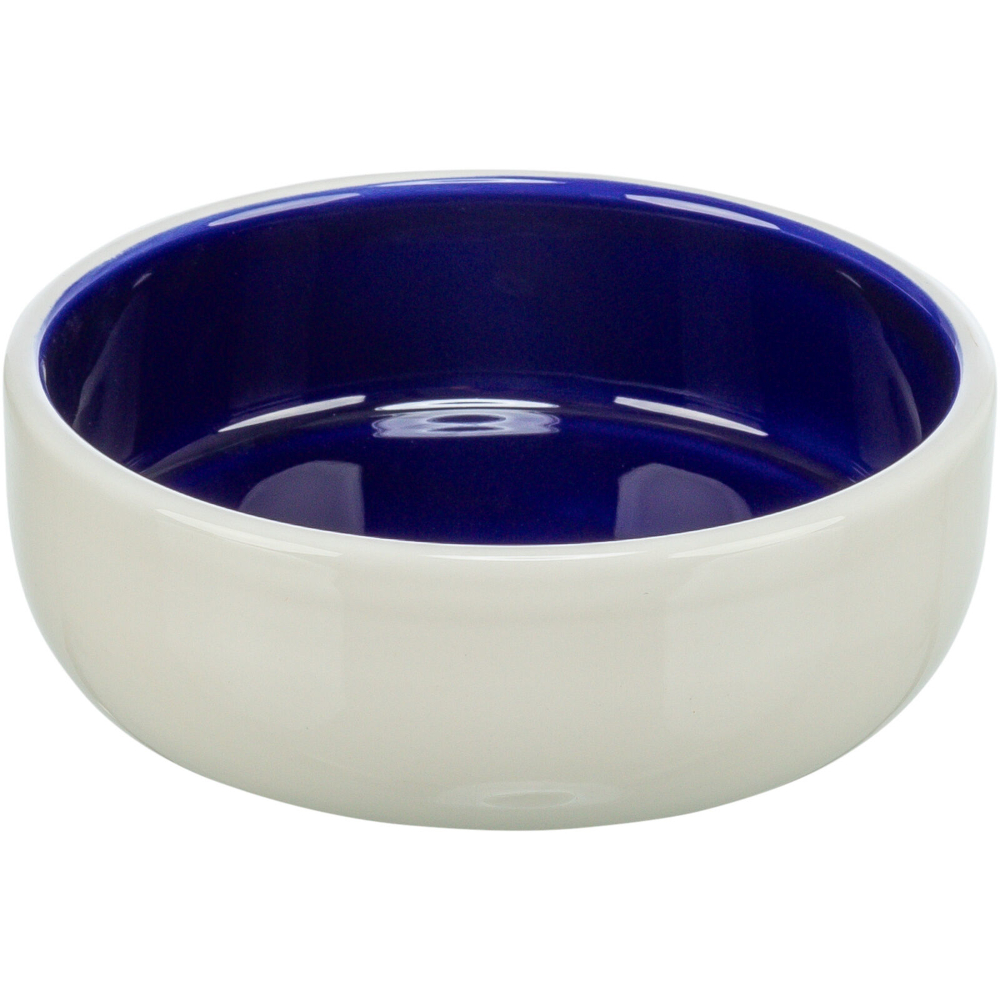
Best ceramic cat food bowl
Sometimes simple is best, and this classic ceramic bowl proves that. It’s made from a durable ceramic, making it difficult to knock over or slide around the floor, and it’s also dishwasher safe.
This ceramic bowl is super affordable too, though you’ll need to buy one each for water and food.
Reasons to buy: Durable, dishwasher safe, tip-resistant
Reasons to avoid: May be too big for smaller cats
How to choose the best cat food bowls
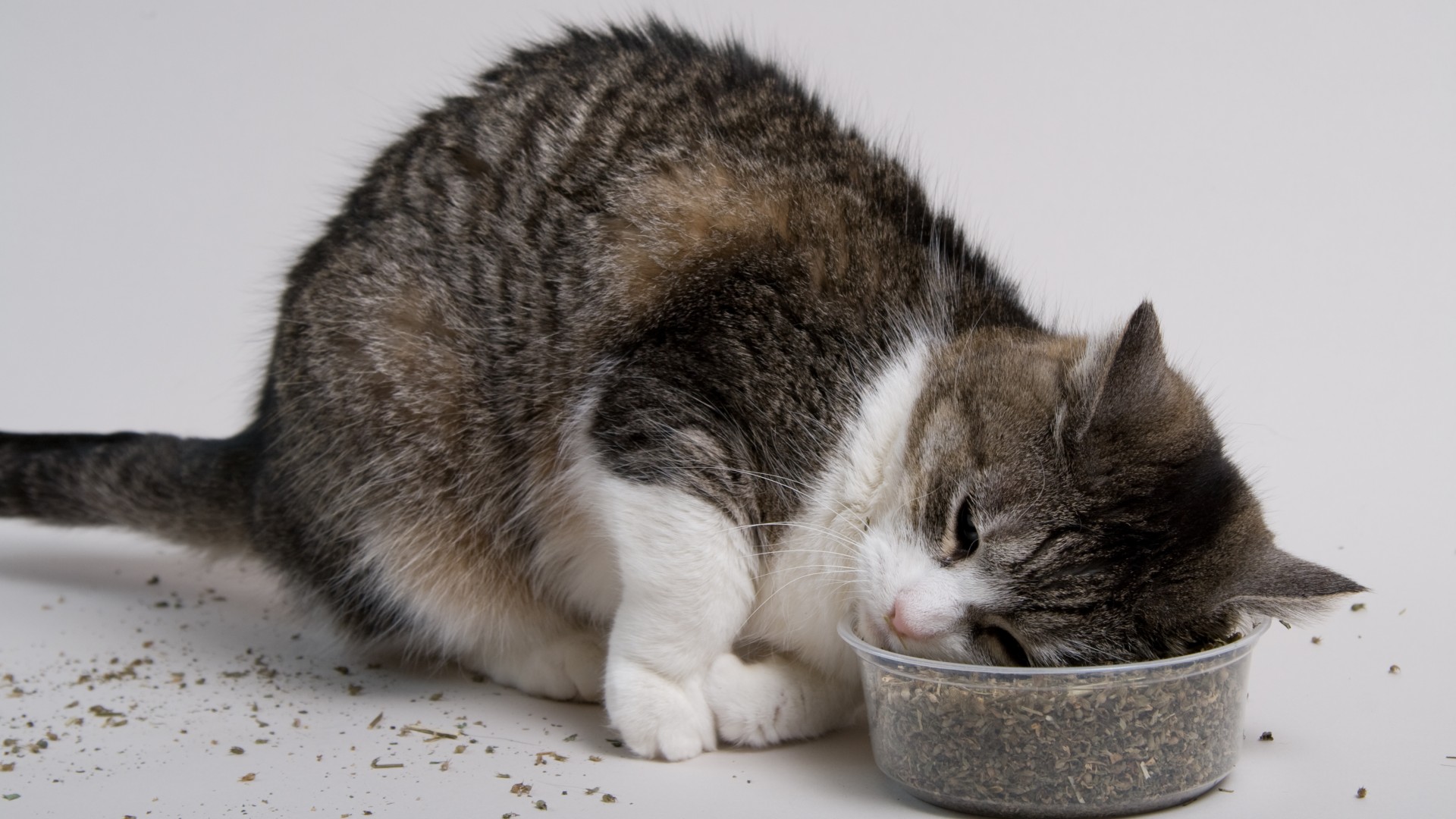
Choosing the best cat food bowl can help to tackle whisker stress and cat acne. A good bowl can also aid digestive health. Here is what you should be looking for when considering the perfect bowl for your feline.
Material: Examine what a bowl is made of. Plastic bowls with playful designs might look cute but many cats have an allergy to plastic which gives them nasty bumps and blackheads on their chin. To minimize the possibility of a reaction, opt for stainless steel, ceramic or eco-friendly materials such as bamboo.
Size and shape: To help avoid whisker stress, think size and shape. If your kitty is prone to lifting food out of their bowl and dropping it on the floor, their current bowl may be too small meaning their whiskers are touching the sides. Wide bowls help to prevent this.
Depth: Deep bowls that are elevated and tilted forward are worth considering if your cats make a mess or suffer from digestive issues. They allow your cat to maintain a more natural posture which reduces neck strain and makes digesting food easier.
Smart features: Choosing one of the best automatic pet feeders is fantastic if you’re often away from home. You can program the feeder to dispense wet or dry cat food at certain times throughout the day. And, just like the best smart pet bowls, they’re also a good option for monitoring portion control and managing your cat’s weight.
Go neat: If you hate having food bowls cluttering up your home or if you and your feline often travel together, why not consider a collapsible food bowl? They’re perfect for long road trips and the silicone ones are easy to clean. When you’re done, they fold down into a disk and can be easily stored.
Types of cat food bowl
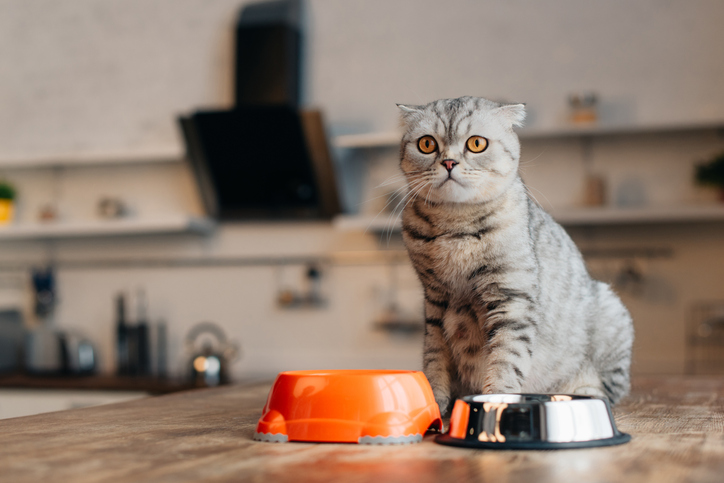
Here's our breakdown of some of the types of cat bowl you'll likely encounter:
Elevated cat food bowl: If you are asking yourself, “should I elevate my cat’s food bowl?” then chances are your feline has digestive difficulties. An elevated cat food bowl will help your cat swallow, aided by gravity. They are also ideal for older felines who experience problems in their joints, including arthritis or stiff muscles.
A raised bowl is also hygienic and clean. Since the bowl sits off the ground, spillage is reduced and the extra height can help reduce dust and fur particles landing in your feline's meal. They do tend to be more expensive than the average bowl, however.
Automatic feeders: When you're out of the home, an automatic feeder is a convenient and fun way to deliver your kitty their next meal. These machines can typically be programmed to feed your cat with their usual amount of food, but some feeders may end up feeding them too much due to auto-filling once a cat's dish becomes empty. Convenient but they can be expensive.
Traditional cat food bowl: This is likely to be the option you're most familiar with. A traditional cat food bowl is often made from ceramic or stainless steel; its circular design is simple and functional. There are typically no bells and whistles but you'll likely want to consider the material. For instance, if your feline is prone to food spillages, heavy ceramic can be a great choice.
What kind of cat food bowl is best?
There is no single perfect cat bowl, according to Dr. Joanna Woodnutt. Like humans, cats are unique so a bowl that works for one might not necessarily work for another.
“Felines are finicky,” she explains. “Having said that, it’s best to get a cat food bowl made of porcelain or glass, as plastic can harbor bacteria and metal can taint the food. Most cats like a shallow, large bowl.”
It’s easy to think that your cat doesn’t care what you serve their food in, but studies have shown that they really do care about how their meals are served.
A study in the journal Animal Cognition showed that domestic cats don’t like to work for their food — they want an effortless meal served up in an easy-to-access bowl. This rules out some bowls with harsh edges and high sides, or those that are too low down and force your moggy to bend down to eat.
Is it better for cats to eat from an elevated bowl?
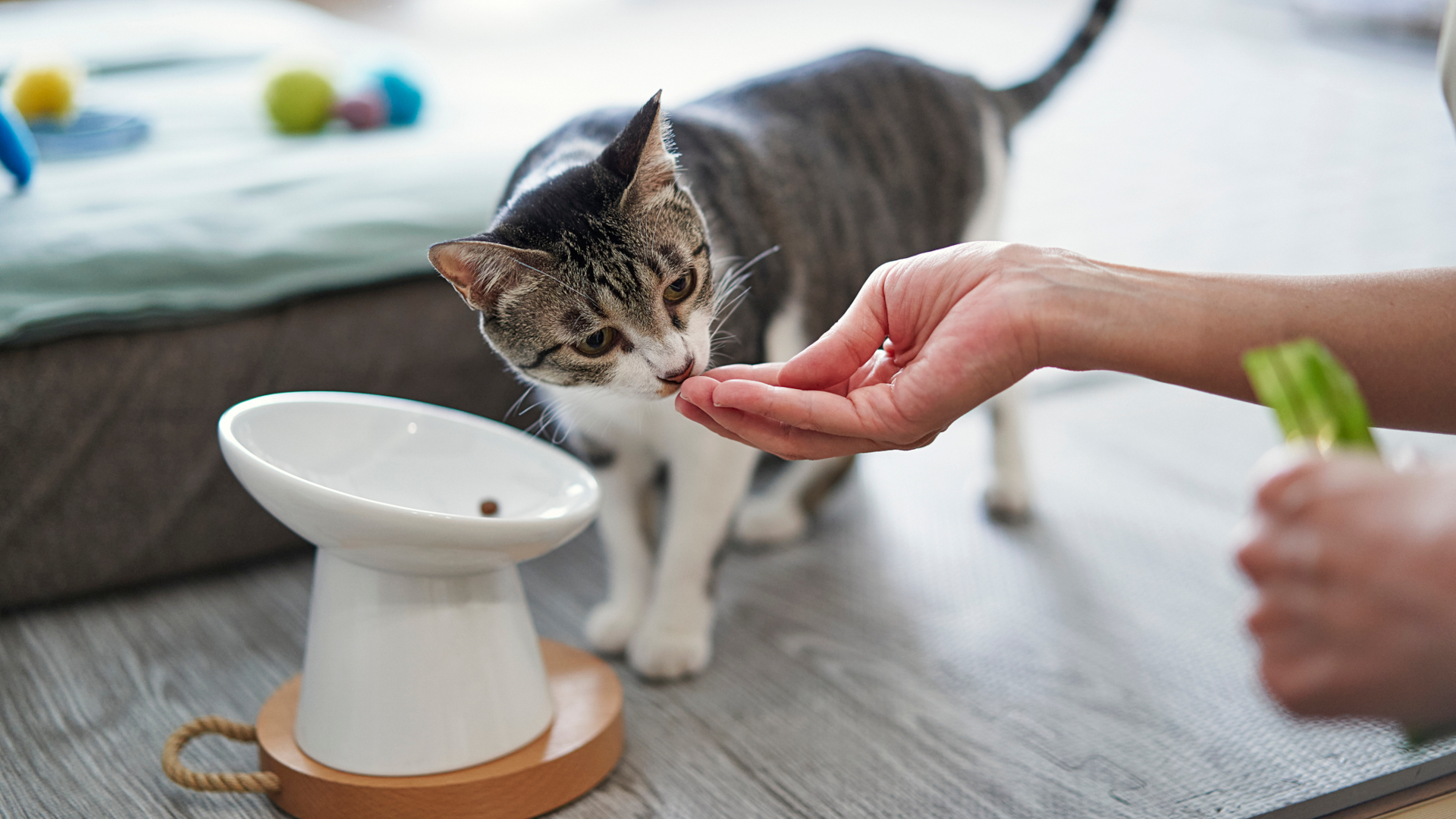
Whether you’re considering an elevated bowl or even asking “do anti-vomit cat bowls work?”, then the answer lies with your cat. “Most cats will be fine with their bowl on the ground, although for some an elevated bowl may help,” Dr Woodnutt advises.
“Cats with arthritis will often benefit from an elevated bowl. You’ll find many cats still take their food and drop it on the floor, then eat it on the floor - so don’t expect too much.”
Are tilted bowls better for cats?
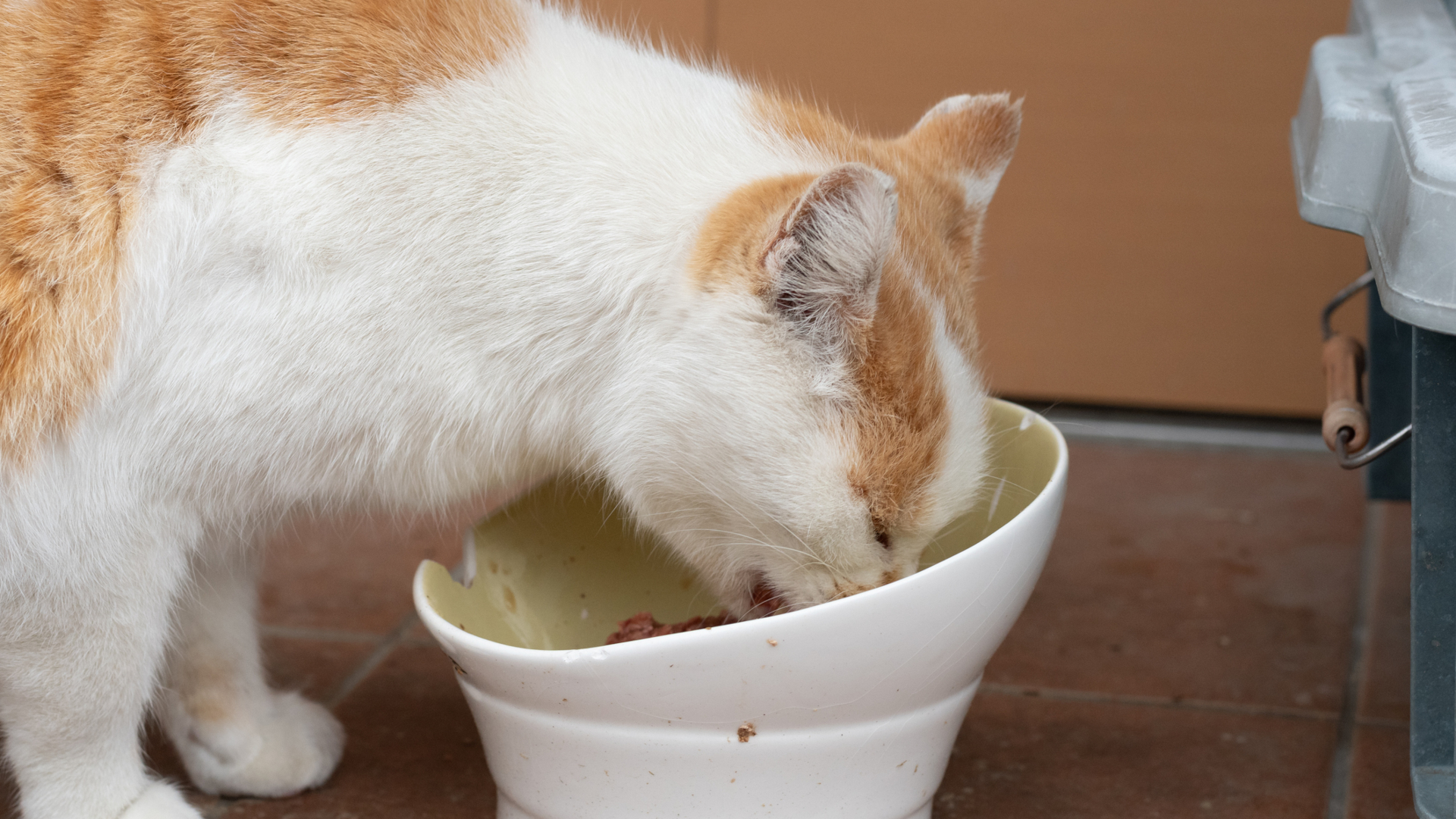
There is there's no 'right' type of food bowl, and it's important to consider your cat's individual preferences. With that said, there are some instances in which a titled bowl could be the right choice.
"It's thought that tilted bowls help cats with arthritis eat more comfortably." says Dr Rebecca MacMillan. That might sound like a niche case, but a study in Journal of the American Veterinary Medical Association showed that 90% of cats over 12 show signs of arthritis.
"If you think about how a cat eats or drinks, they often hunch on their elbows with their shoulders forward, so it isn't hard to see how getting into a less hunched position would put less strain on painful joints." explains Dr MacMillan.
How we selected the best cat food bowls
So how did we select the best cat food bowls for this guide? Well, we focussed on three key areas: the material the bowls are made from, their size and depth, and the overall design. We also wanted to ensure we included a few bowls with smarter features, such as elevated bowls and automatic feeders.
Material: We’ve avoided the use of plastic bowls in this guide. While they’re cheap and convenient, they are more likely to harbor bacteria. We’ve opted for safe and healthy alternatives instead, such as ceramic, silicone and stainless steel.
Size and depth: We’re mindful that cats favor large, shallow bowls because they are less likely to irritate their whiskers. We’ve mostly included such bowls, with a few notable exceptions such as the automatic pet feeder. This product, while shallow, does not have high sides, however, and therefore won’t cause irritation.
Overall design: We’ve included a range of designs in this guide, from the simple yet effective to the more elaborate and stylish. You’ll also note that aside from appearance, the cat food bowls above span the range of what’s available on the market right now, such as automatic feeders that give you more flexibility in your day and elevated models, which can help prevent digestive disturbances.

Dr Joanna Woodnutt qualified as a veterinarian from the University of Nottingham where she then went on to practice companion animal medicine in the Midlands. She really took to the consulting side of things and helping clients with medical problems such as dermatology, behaviour and nutrition - anything that involved helping clients understand their pets better.

Rebecca is a vet surgeon who graduated from the Royal Veterinary College in 2009. She has a wealth of experience in first opinion small animal practice, having done a mixture of day-to-day routine work, on-call emergency duties and managerial roles over the years. She enjoys medicine in particular and she is proud to have recently achieved a BSAVA postgraduate certificate in small animal medicine (with commendation). She writes on various feline and canine topics, including behavior, nutrition, and health. Outside of work and writing she enjoys walking her own dog, spending time with her young family and baking!
PetsRadar Newsletter
Get the best advice, tips and top tech for your beloved Pets

Kathryn is a freelance writer who has been a member of the PetsRadar family since it launched in 2020. Highly experienced in her field, she's driven by a desire to provide pet parents with accurate, timely, and informative content that enables them to provide their fur friends with everything they need to thrive. Kathryn works closely with vets and trainers to ensure all articles offer the most up-to-date information across a range of pet-related fields, from insights into health and behavior issues to tips on products and training. When she’s not busy crafting the perfect sentence for her features, buying guides and news pieces, she can be found hanging out with her family (which includes one super sassy cat), drinking copious amounts of Jasmine tea and reading all the books.
- Ian StokesFreelance writer
